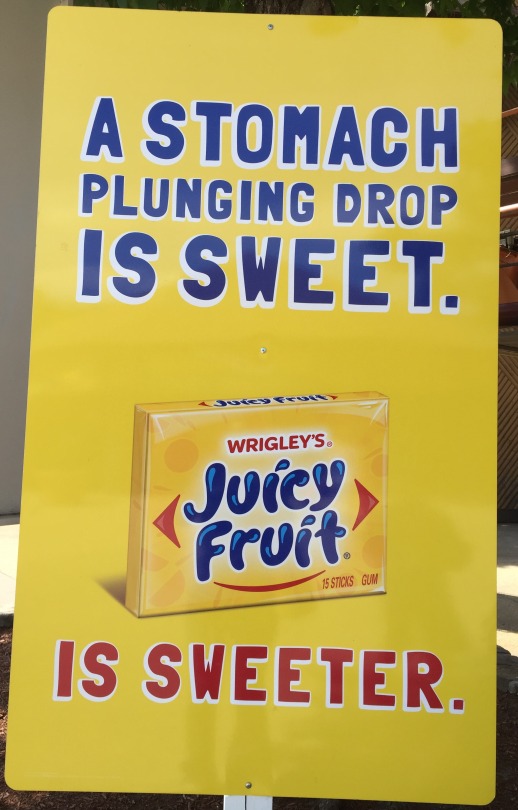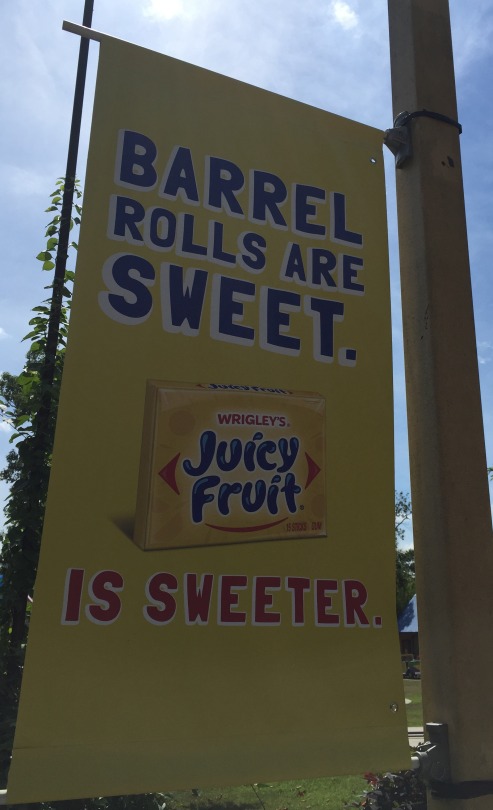
When heading out to an amusement park such as New Jersey’s own Six Flags Great Adventure, advertising
is perhaps the last thing to cross one’s mind. Super coasters,
white-knuckle rides, high-pitched screaming, yes…but ad campaigns, not
so much. Six Flags knows this as well, but the brand is also keenly
aware of the miles of advertising real estate available throughout the
park. And since today’s consumer no longer wishes to have brands disrupt
from their experience, especially an experience for which they’ve paid a
handsome sum, what’s a brand like Six Flags to do?
The masters of the thrill ride have proven they are also the masters
of enhancing (rather than disrupting) the experience by using a
technique that websites have been selling as the latest, greatest thing:
native advertising.
Six Flags reminds us that, long before there was an Internet, brands
could weave their messaging into customers’ lifestyles in a way that
became more meaningful than simply sticking a brand-centric ad in front
of potential buyers. Native advertising is not something invented by
modern-day marketing gurus; rather, this effective technique, where
brands become part of the story, is a tactic that the digital world has
adapted from the real world.

Just take a walk through Six Flags to see native advertising in
action. While having irrelevant ad campaigns scattered throughout the
park would potentially annoy visitors (or, worse for advertisers, simply
be “unseen” as people search for their next favorite ride), campaigns
for brands like Juicy Fruit gum capture attention by becoming part of
the experience. Dotting the grounds are signs for the popular Wrigley’s
chewable that include headlines like “A stomach plunging drop is sweet,”
“Barrel rolls are sweet,” and “Diving loops are sweet,” – always
followed with the closing line, “Juicy Fruit is sweeter.” Visitors
instantly get that the brand gets them, or at least what they are there
for. And they respond, from smiling and pointing out the signs to their
friends, to taking photos of and with the ads (and almost certainly
posting on social media). Now that’s interactive.

The “You’re not yourself when your hungry” campaign for Snickers
candy bars also makes some native appearances throughout Six Flags
Great Adventure. Capitalizing on Snickers’ self-proclaimed ability to
stop people from being “hangry,” the brand’s ads serve as a reminder to
grab a snack and keep the fun on track. “If your child is giving you a
piggyback ride, you might be hungry,” says one park sign that features
prominent Snickers branding.
The sweet treat takes their native advertising approach even further,
with signage on ride lines that reads, “If you think this is a conga
line, you might be hungry.” Entertaining a captive audience, one that is
likely very hungry and disregarding any thoughts of dieting at that
moment, Snickers really satisfies…or at least takes one’s mind off of
the long wait.
Why stop with the line leading up to the ride? Some brands don’t.
Now, not every menacing machine is plastered with branding of some sort.
That would turn consumers’ stomachs, in a way they don’t want to feel,
even at Six Flags. However, when done properly (and sparingly), this
really is the ultimate native advertising: the brand is literally in the
experience with the consumer. The “Twister” top-spinner ride is one of
the best examples, bringing to life the Twix candy bar campaign, “Left
Twix, Right Twix.” The entire left side of the ride is covered with
signage that visually screams “Left Twix is the more thrilling side,”
while the right side declares “Right Twix is the more exciting side.”
Obviously, riders can’t lose no matter which side they choose – that’s
the whole point of the campaign. And friends and family too timid to
ride can see which side the rider has chosen.
Will these campaigns increase sales in a trackable manner for the
brands? That’s not the point of native advertising. The point is to
become part of the medium in a way that connects more emotionally with
the consumer to help raise brand awareness and affinity. It’s brand
affinity that can make a real difference. No matter how clever the
Snickers integration is, someone with severe dental issues probably
won’t be buying the gooey, tooth-pulling treat for themselves. That’s
ok. They’ll remember the campaign in a positive way. Perhaps when
Halloween comes around, that non-Snickers-eating individual will choose
to buy Fun Size Snickers over the brand’s competitors to give out to
trick-or-treaters. The advertisers at Six Flags get the bigger picture
of native advertising, and that’s why they’ll reap the bigger rewards,
one screaming fan at a time.
~ Denise Blasevick, @AdvertGirl & CEO, The S3 Agency
Note: This post originally appeared in my Examiner.com column. Please follow me there too!




